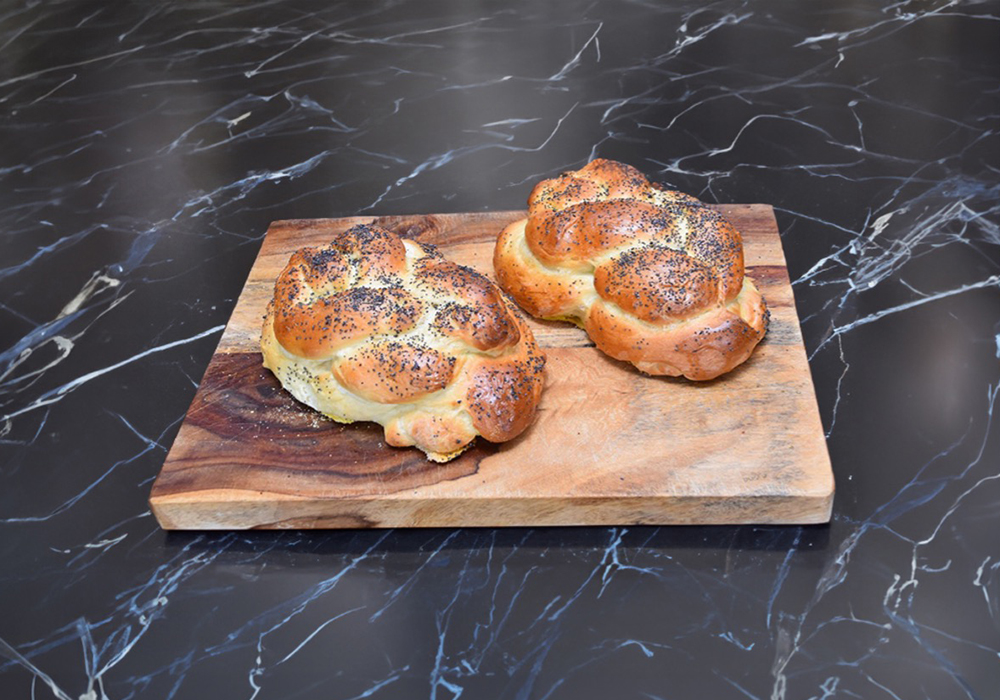I had a small crisis at my home a few days before Christmas. In the midst of cookie baking and after 17 years of faithful service, my oven stopped working. I finished baking the cookies at my daughter’s home, but the big celebration was at my house. Although it was the least of my concerns among all the holiday dishes I now had to figure out how to cook, what my family was most worried about was how I would make the bread.
You see, I make bread for my family every few days. About 20 years ago, I was cleaning the pantry and found a few leftover hamburger buns that got pushed to the back. I knew it had been more than three weeks since I bought buns, and although they were not particularly fresh, none had a single speck of mold. It made me really stop and think. I looked at the ingredients and I had no idea how to pronounce most of them or what their purposes were. What was being added to these buns that would make them so resistant to mold and spoilage? Did I really want my family ingesting those chemicals?
At that point, I had made bread from time to time but usually for a special occasion. I had a few recipes, but I checked out two books on breadmaking from the library, read about techniques, and explored many other recipes. I made a quicker recipe that night and never looked back. It is not difficult to work with yeast, and now the five minutes I spend kneading dough are mine to quietly think. I have not bought bread since that time.
When the house was full with my girls and their friends, I was making two loaves every few days. Now that they have moved away, I mostly make only one loaf. My husband and I cannot consume any more than that before it becomes stale or molds, because it has no preservatives. Guests and relatives, including my girls’ friends, just expect it when they come to the house.
By making our bread, I eliminated one of our most-consumed processed foods. I started looking at other labels and found that it was easy to eliminate many other processed foods. I still have processed foods in my home, but my family has seen health benefits from reducing our consumption.
What Are Ultra-Processed Foods?
Under the NOVA classification system, all foods fall into one of four groups according to level of processing:
- Group 1: Unprocessed foods, such as fresh or frozen fruits and vegetables, meat, seeds and grains, milk, or eggs
- Group 2: Minimally processed (grinding, milling, or drying) foods that contain no additives, such as oils, butter, honey, and pure sugar and salt
- Group 3: Relatively simple food products processed with salt, sugar, fat, or additional starch ingredients to enhance shelf life and prevent the spread of microorganisms, such as cheese, canned vegetables, salted nuts, and dried or canned fish
- Group 4: Ultra-processed foods with ingredients or chemicals that are typically not used in home cooking, such as soft drinks, packaged snacks, reconstituted meat products, packaged breads, cereals, prepared frozen dishes, and packaged baked products with chemically modified ingredients or preservatives
Why Is Consuming Fewer Ultra-Processed Foods Important?
In 2024, the American Cancer Society estimated that 67% of U.S. youth and 57% of U.S. adults’ total daily energy intake is from ultra-processed foods. The proportions are even higher for Black and Mexican American youth.
An ever-growing body of evidence continually associates higher consumption of ultra-processed foods with increased cancer risk and mortality. Researchers conducting a large prospective cohort study found that a 10% increase in the proportion of ultra-processed foods in the diet was associated with a 12% increase in overall cancer risk and an 11% increase in breast cancer risk. In another prospective cohort study, researchers linked consumption to increased colorectal cancer risk.
Some of the proposed causative factors for the increased cancer risks include that replacing nutritious foods with ultra-processed foods means that a person consumes less fiber and more sugar, fats, and additives. Ultra-processed foods are often higher in calories or produce a high glycemic response, leading to weight gain. Additionally, the processing may include carcinogenic additives and emulsifiers.
How Can You Reduce Consumption of Ultra-Processed Foods?
Change requires individual choices at a personal level and broader action at the societal level. If you have chosen to take steps with yourself and your family like I did, the American Institute for Cancer Research has some suggestions to support you:
- Start slowly. Eliminate one item and then another.
- Substitute a fresh fruit or vegetable for an ultra-processed food.
- Drink more water than sugary beverages.
- Choose whole grains over processed grains.
- Make a homemade version of a processed food, such as bread, kale chips, granola, or salad dressings. Make oatmeal with fruit instead of an ultra-processed cereal.
However, we also need to make broader public policy changes as a society. Underrepresented and low-income communities often have fewer grocery stores and more convenience stores, resulting in unequal access to healthy foods like fresh fruits and vegetables. Advocating for policy change and incentive programs is critical to overcoming disparities and inequalities.
Take a moment to look at your food labels. Do you really want to consume those chemicals and additives? Making one small change at a time is not as daunting as it looks. Fortunately, my Christmas crisis was short lived, and I now have a beautiful new double oven that is perfect for making bread and other healthy foods. I challenge you to also become a regular baker of healthy bread.






